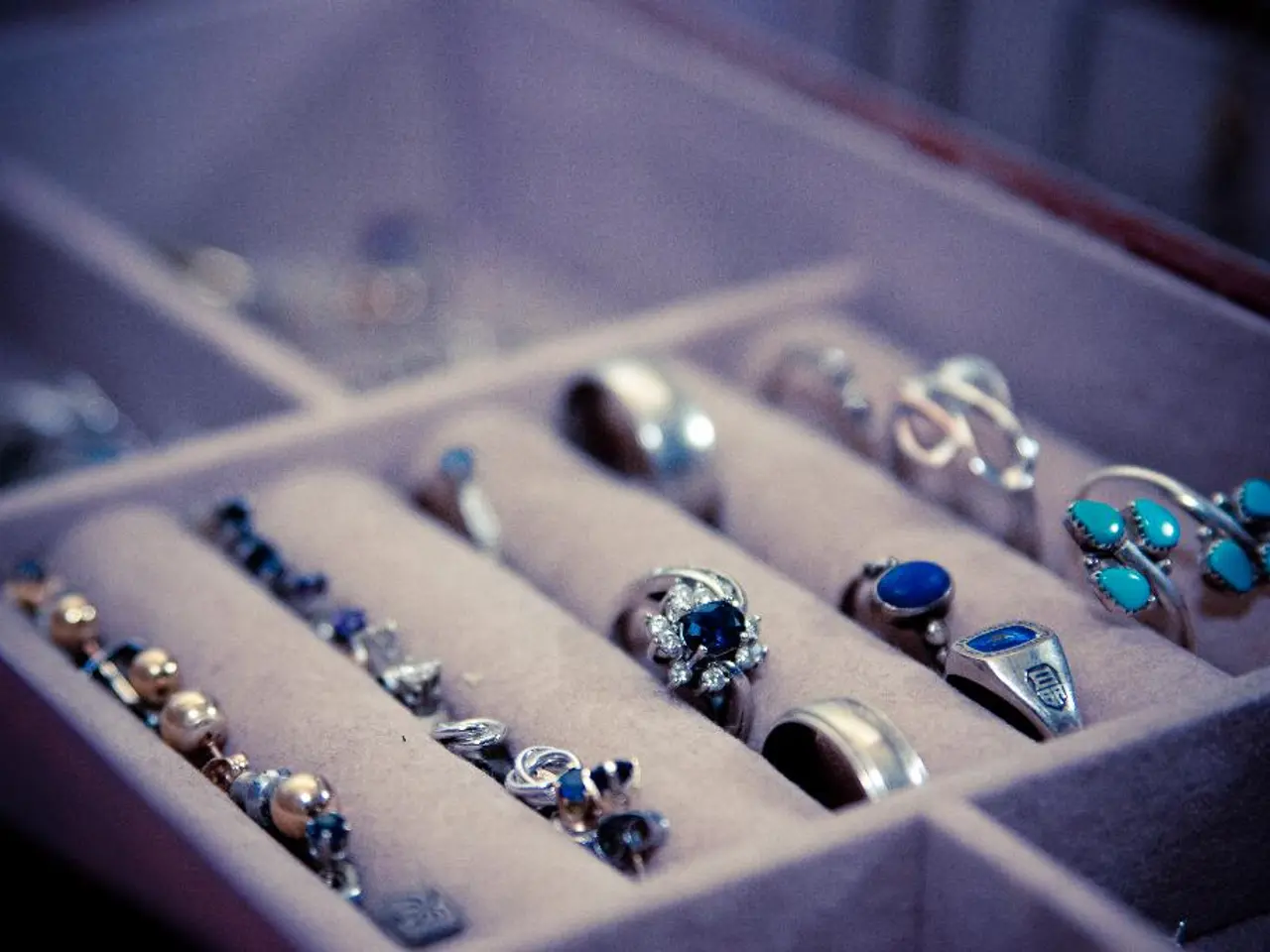Jewelry Reference: Garnet as Birthstone for January Born Individuals
In the heart of Africa, Tanzania and Namibia are prized for their abundance of garnets, a gemstone that has captivated humankind for centuries. The term 'garnet' derives from the Middle English word 'gernet', meaning dark red, and the Latin 'granatum', meaning 'pomegranate', reflecting the gemstone's rich, vibrant hues.
Garnets come in a spectrum of colours, ranging from deep red to orange rust, and even deep-violet and rich royal reds. This diversity in colour is due to trace metals such as manganese, iron, or chromium. The array of colours and transparency of garnets make for spectacular pieces of considerable value.
Garnet is not just a beautiful gemstone; it is steeped in history and tradition. In ancient times, garnet was used as a talisman of victory and protection during battles. The Ancient Egyptians used garnet in their jewelry and decorative carvings, and it was a popular choice for signet rings worn by the Ancient Romans, especially for sealing important documents.
Throughout the 19th century, Bohemia and Russia were primary locations to source garnet. In Bohemia, pyrope garnets, known for their deep red colour, were mined and used to embellish a famous hair comb now housed at the Smithsonian National Museum of Natural History. In Russia, garnet was a popular gem in decorative creations by the famous jeweller Peter Carl Fabergé and was highly favoured by the Russian royal family.
Today, garnet is used in a wide range of modern jewelry collections and bespoke pieces, including rings, statement pendants, and tiaras. The main species of garnet and their associated colours are:
- Pyrope: Deep red, often mistaken for ruby, highly valued for its intense red colour.
- Almandine: Usually dark red to reddish-brown, one of the hardest garnet species, commonly used in jewelry.
- Spessartine (Spessartite): Bright orange to reddish-brown, known for its excellent brilliance.
- Grossular: Typically colourless in pure form but commonly found in various colours due to impurities, including green varieties like the valuable Tsavorite.
- Andradite: Comes in green or black forms, with green demantoid garnets being highly prized for their lustrous brilliance.
- Uvarovite: Rare green garnet usually found in tiny crystals.
There are also blends and trade names such as Rhodolite (a pyrope-almandine mix with purplish-red hues) and Malaya (a pink-orange pyrope-spessartite blend sometimes called Imperial Garnet). There are also colour-change garnets that shift colour under different lighting conditions.
Becoming a Gem-A Member allows you to receive copies of Gem-A's publications, Gems&Jewellery and The Journal of Gemmology. Garnets can display a wide colour spectrum including fiery red, deep red, orange, brownish-red, green, pink, and rarer hues like yellow and purple depending on their species and chemical composition.
Garnets are found in many countries worldwide, including Australia, India, Czech Republic, Myanmar, Brazil, Sri Lanka, Tanzania, and Namibia. During the Victorian era, rose-cut garnets were often mounted in gold plate or yellow gold. Despite its rich history, garnet remains a popular gemstone today, cherished for its beauty and symbolism.
[1] Gem-A: The Main Species of Garnet [3] GIA: Garnet
- In addition to being a precious gemstone, garnet holds historical and cultural significance, with uses as a talisman and in jewelry throughout ancient civilizations.
- Engaging in Gem-A Membership offers access to educational resources like publications such as Gems&Jewellery and The Journal of Gemmology, providing insights on garnets and other gemstones.3.为了了解更多关于




